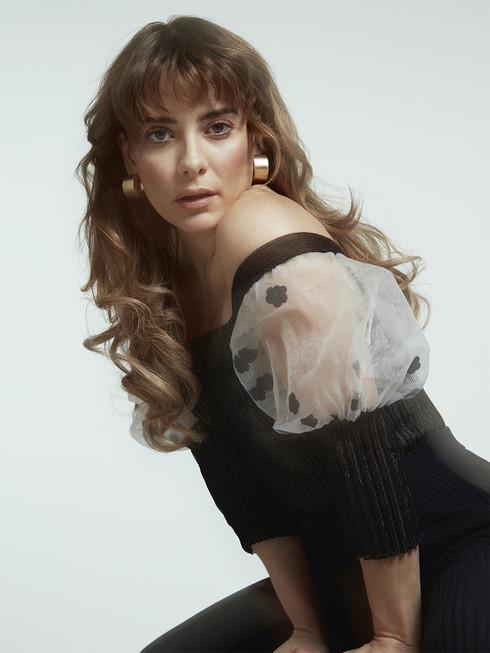Elliphant
Written by Anna SundelinSwedish singer, songwriter and rapper. She is current with the single ”Could This Be Love”.
What is your dream project?
My dream project would be to bring my family and travel all over the world with a studio bus and make music with local artist and producers on the most amazing spots. Like deep in the jungle far out in the desert and on top of the mountain!
How did you become interested in this field?
Music has always been obvious in my family home, it was so natural in our house that I never really had an interest in it, it was like the moon and the sun, something beautiful I took for granted and never thought I’d use to express myself with… But it was always important for me to process my life through art, so I first bloomed by painting and with photography, then life had a different plan for me and through traveling and being super into the underground music scene, I slowly morphed into being a music artist. It was never my plan to become Elliphant, but I’m forever grateful to life for this blessing.
What did you learn a little too late?
How amazing collaboration is! That art making is pure magic when you share the process with someone. Before, I was always lonely in my creativity and that made me a control freak, but when I started writing songs, I was depending on the producer’s. Cos I don’t know how to play any instruments or music programming, so I had to let go of all prestige and trust the process. Soon, I fell in love with the feeling I got from making something unexpected with someone that I sometimes didn’t even know before that. It’s still what I love most with making music, to depend on someone else and make a song from the air between me and a stranger.
How would you describe your aesthetics?
I don’t think I have any aesthetic, am all over the place. I can’t make up my mind in general, but when it comes to my appearance am extra ambivalent. I think I want to be perceived all clean looking with a naturally fresh glow like cute freckles, summer breeze vibes. But I seem to have some ‘un washable’ dirt under my nails and a messy hair (and spirit) that’s impossible to untangle so that’s definitely not the case. My aesthetic is in the eyes of the viewer I guess, lol.
Would you describe yourself as more of a pessimist or a dreamer?
A dreamer for sure. I enjoy dreaming maybe a little too much, for me it doesn’t matter if a dream come to life or not, cos it’s the dream itself that matter. My boyfriend goes crazy with me dreaming away all the time, but I never want to waste a moment of dreaming just because it realistically not gonna happen. It’s the moment that matter for me and 99% of my dreams stay as dreams and that’s all good. I don’t understand people that don’t care to dream cos they’re afraid of disappointment.
What gives you energy?
Nature. And the love I have in my friends and my family.
What is the best thing about being an artist based in Sweden?
Sweden is a great place both now and historically when it comes to art in general. It’s a small country with big creative fire. I haven’t worked on music in Sweden so much in the past but are planning on doing my next album here and am very excited about that cos there is so much talent concentrated here. I actually can’t wait to start! Soon, as my daughter don’t need me 24/7 and this COVID shit pass I will jump into the northern sea of stars and create some pure magic am sure. Blisseh!















